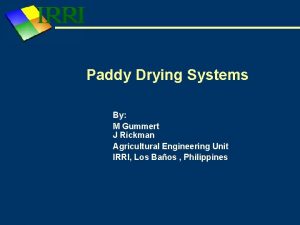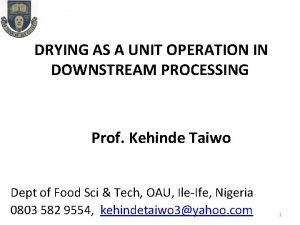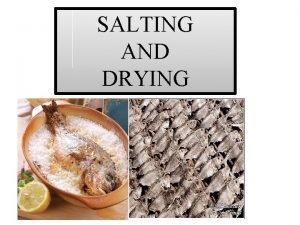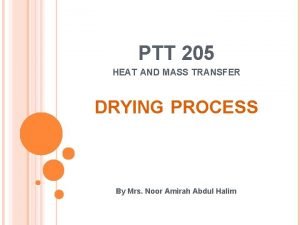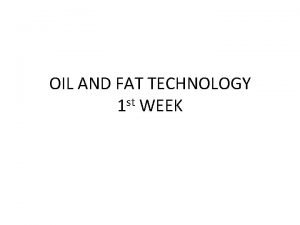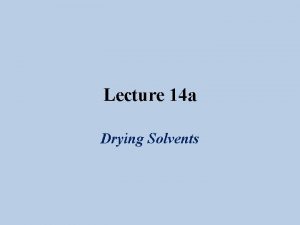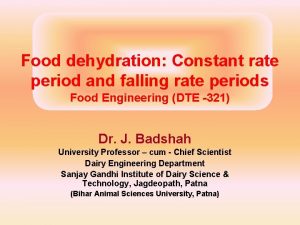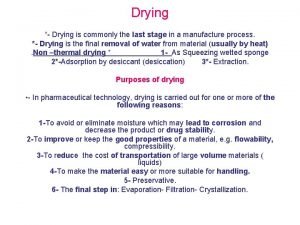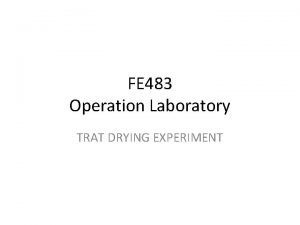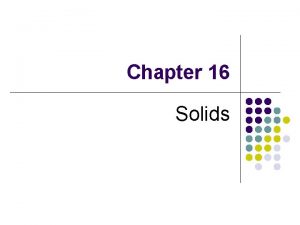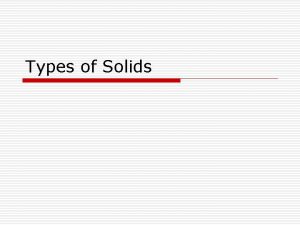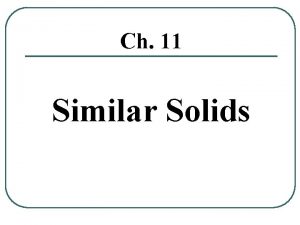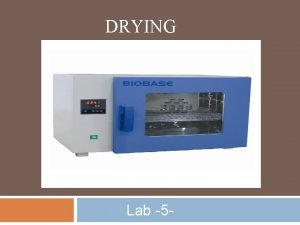Drying Operation Drying of solids Whats drying of









- Slides: 9

Drying Operation (Drying of solids)

What’s drying of solids ? In general, drying a solid means the removal of relatively small amounts of water or other liquid from the solid material to reduce the content of residual liquid to an acceptably low value.

- Water or other liquids may be removed from solids mechanically by presses or centrifuges or thermally by vaporization. This chapter is restricted to drying by thermal vaporization. - It is generally cheaper to remove liquid mechanically than thermally, and thus it is advisable to reduce the liquid content as much as practicable before feeding the material to a heated dryer. - The liquid content of a dried substance varies from product to product, Occasionally the product contains no liquid and is called bone-dry. More commonly, the product does contain some liquid. Dried table salt (0. 5%), dried coal (4%), and dried casein (8%).

The solids to be dried may be in many different forms: flakes, granules, crystals, powders, slabs, or continuous sheets. Flakes Granules Crystals Powders Slabs Continuous sheets

Classification Dryers: of - Continuous and Batchwise operation - Some Agitate and Unagitated solids Adiabatic (direct dryers) Nonadiabatic (indirect dryers) and Dryers heated by dielectric, radiant, microwave energy are also nonadiabatic. or Some units combine adiabatic and nonadiabatic drying; they are known as direct-indirect dryers.

Solids Handling in Dryers: (a) gas flow across a static bed of solids (b) gas passing through a bed of preformed solids (e) Flash dryer (concurrent gas solid flow) (c) Rotary dryer (d) fluidized solids bed

Principles of Drying - Because of the wide variety of materials that are dried in commercial equipment and the many types of equipment that are used, there is no single theory of drying that covers all materials and dryer types. - Variations in shape and size of stock, in moisture equilibria, in the mechanism of flow of moisture through the solid, and in the method of providing the heat required for the vaporization all prevent a unified treatment. - General principles used in a semiquantitative way are relied upon. Dryers are seldom designed by the user but are bought from companies that specialize in the engineering and fabrication of drying equipment.

Temperature Patterns in Dryers (a) batch dryer (b) continuous countercurrent

Temperature Patterns in Dryers
